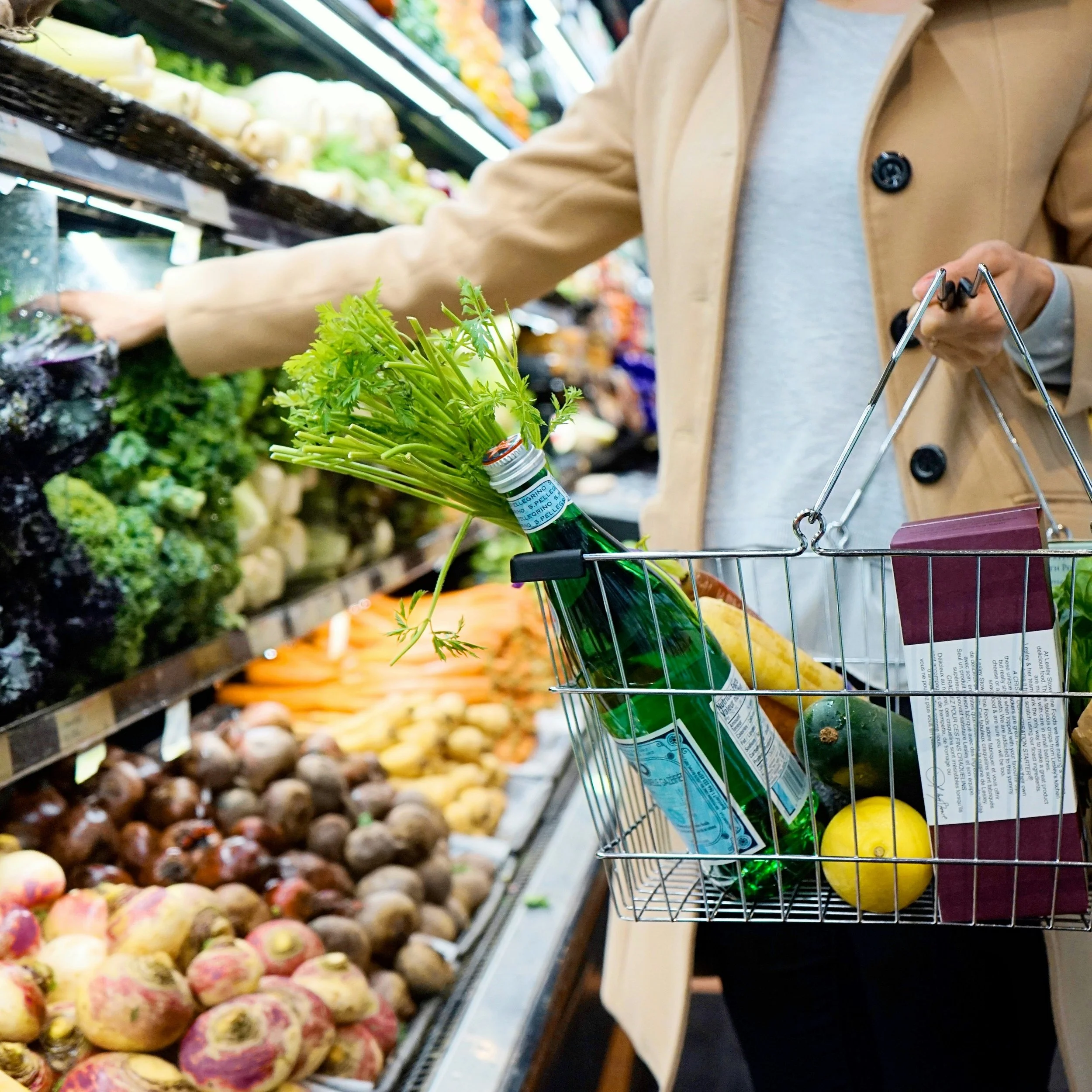How To Navigate The Grocery Store
There seems to only be two teams when it comes to grocery shopping - you either love it or you hate it… there’s no in-between. Regardless of what side you’re on, I hear you. While I personally enjoy it, I understand the frustrations of check out lines, lack of time and sometimes just figuring out what you should actually be buying.
Nutrition has become such a controversial topic (when it really doesn’t have to be!) Should I be eating meat? Not eating meat? What about dairy? Is gluten really that bad? But what about sourdough bread? What’s the deal with Citric Acid in everything? There are pros and cons to it all (which is why it can be a challenging area to navigate), but what I want to help you do today is navigate your grocery store trips with ease which may save you time, money and your sanity (who knows? You might end up switching teams!)
Go in with a plan.
Personally I like to start with a meal plan for the week (typically planned on Saturdays with a trip to the store at some point during the weekend). That way, I don’t have to take time out of my busy week to figure out what I’m going to eat and because I don’t want to waste food, I’ll make whatever I buy at the store.
For a budget-friendly shopping experience, check out your local store’s sales for the week and design your meal plan and grocery list around that.
Make a list before you go. I like to take this one step further and break up my list into sections for an even more efficient trip - produce, meat / seafood, packaged goods, dairy, frozen items, etc. Ideally, your list should be mostly fruits and vegetables. Check it before your next trip and see if you can add a few more colorful pieces of produce to your list.
Don’t go hungry. A classic grocery store tip but one that’s not to be ignored!
Focus on the periphery
Ideally the outskirts of the store is where you want to be spending most of your time. This is where the fresh food tends to be. As mentioned above, a majority of your grocery list ideally would be fresh fruits and vegetables. They provide so many health benefits (vitamins, minerals, fiber…all the good stuff!) Your body will thank you.
Buy organic when possible
In an ideal world, we wouldn’t have to decide between buying organic and non organic - everything would just be pesticide-free and everyone would have equal access. Unfortunately this isn’t reality. The chemicals used on conventionally grown produce are toxins our bodies were not designed to process. They can potentially affect your endocrine system, therefore your hormones (which contribute to almost all of your body’s functions). Not only are there harmful effects on your body but on the environment as well.*
I’m fully aware that organic produce is typically more expensive than conventional so I highly suggest keeping up with the Environmental Working Group (EWG)’s Clean 15 and Dirty Dozen. These are updated annually with the top 15 “cleanest” produce (tested for the least amount of pesticides) and top 12 “dirtiest” (tested for the most amount of pesticides, so recommended to purchase organic when possible).
Whether you’re buying organic or not, don’t forget to thoroughly wash your produce. Branch Basics has some great tips, even broken down into organic vs non and eating raw vs cooked.
*Source: Chemical Pesticides and Human Health: The Urgent Need for a New Concept in Agriculture
Read food labels
This might be helpful (and a time saver) to start with the packaged food you already have in your home and you buy on a regular basis. That way, you don’t have to spend precious time reading every label while you’re at the grocery store. Another option would be to look up the items online that you typically buy and read the labels ahead of time. Once you have an idea of what’s actually in what you’re buying, you can make better decisions at the store.
So what should you be looking for anyway? Because there are thousands of food additives (some worse than others) it wouldn’t be the best use of your time to know the ins and outs of every single one of them. So instead of focusing on the “bad” I always like to shine light on the good. My general rule of thumb is, if it doesn’t sound like food it’s (generally) a no for me. However, there are exceptions I have to make because in some categories there are no other options. For example, if you don’t eat gluten and are looking for gluten-free bread or pasta, a majority of it will have Xanthan Gum (which acts as a binder in place of the gluten). While it’s been deemed to be generally safe in small amounts,** it’s not food. Our bodies were designed to consume food, use it for energy and absorb all the good nutrients. But when you’re at the store and the pasta with Xanthan Gum is the only gluten-free option (perhaps there’s only a few other ingredients and those are food, so that’s a win!) and you really want pasta that week, then go for it.
Source: Re‐evaluation of xanthan gum (E 415) as a food additive
I hope seeing this broken down a bit (with some science to back it up!) helps make your future grocery store trips a little easier and even more enjoyable :)

